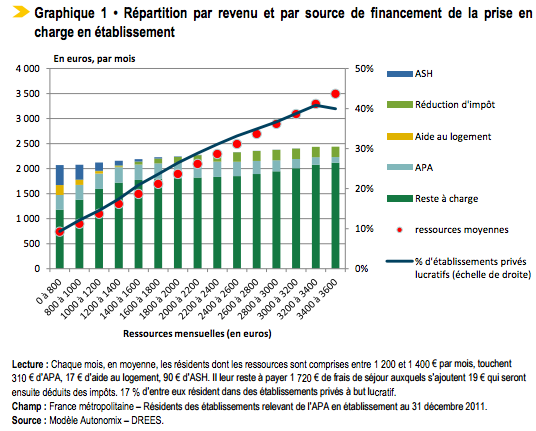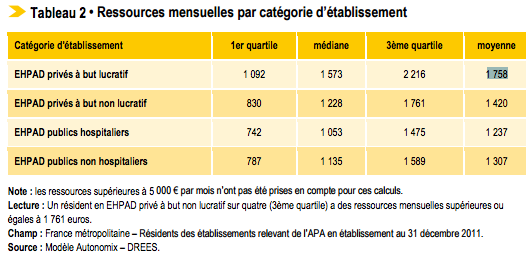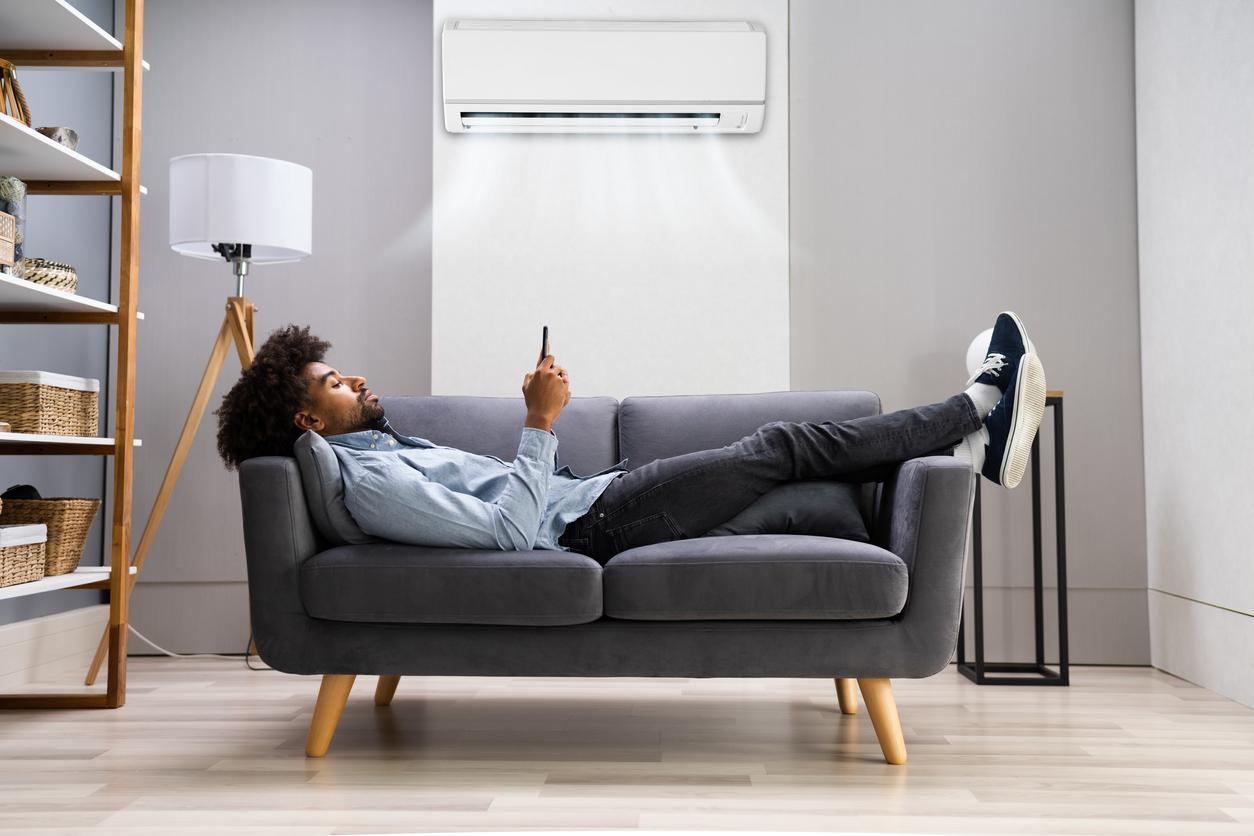According to the DREES, the costs remaining to be borne by elderly people receiving aid represent a significant part of their budget. Especially among those in institutions.

Expenses for the care of dependent elderly people (i.e. 1.2 million people) amounted to 28.3 billion euros in 2011, 25% of which are not financed by public allowances or aid, reveals a file published this Thursday by the Orders (1). In this document, it reviews the share of expenses that remains the responsibility of these people before the reform carried out by the law on adapting society to aging which came into force in 2016. And the figures reported are not the most reassuring for the finances of seniors.
A remaining charge of €80 per month at home
The Directorate first writes that the costs remaining to be borne by beneficiaries of the personalized autonomy allowance (APA) at home can represent “a significant part of the budget of the most dependent or the most modest people, in particular when the amount of their aid plan has reached the legal maximum”.
The beneficiary’s participation thus amounts to €81, on average, once the tax reduction has been deducted (2).
Even more worrying, the dossier analyzes the costs remaining to be borne by dependent elderly people living in establishments (retirement homes for example), “which often prove to be higher than their current income, despite the existing aid systems”. These sums mainly concern the living expenses of residents such as accommodation and dependency rates.
In figures, the average remainder to be paid by residents amounts to €1,758 per month, before taking into account social assistance for accommodation (ASH). And the latter is far from erasing this burden since, each month, on average, residents whose monthly resources are between 1,200 and 1,400 €, receive 310 € of APA, 17 € of housing assistance, and barely 90 € of ASH!

A difficult situation for some seniors which is far from marginal because at the end of 2011, the DREES reported that 560,000 elderly people lived in establishments covered by the APA in establishments, that is to say mainly establishments for the elderly. dependent (EHPAD).
A higher standard for the more affluent
Faced with these figures, the Dress notes a concern about an effect that intervenes: “the wealthiest people more often reside in private for-profit establishments (category of establishment applying the highest rates) and, within the same category of establishment, the wealthiest people seem to choose more often establishments with higher prices, probably corresponding to a higher standard. Proof that senior life does not rhyme with the end of social injustice…

(1) The Research, Studies, Evaluation and Statistics Department
(2) In the Fragonard report, the monthly amount of the home APA co-payment before tax reductions is estimated at €121 on average
.















